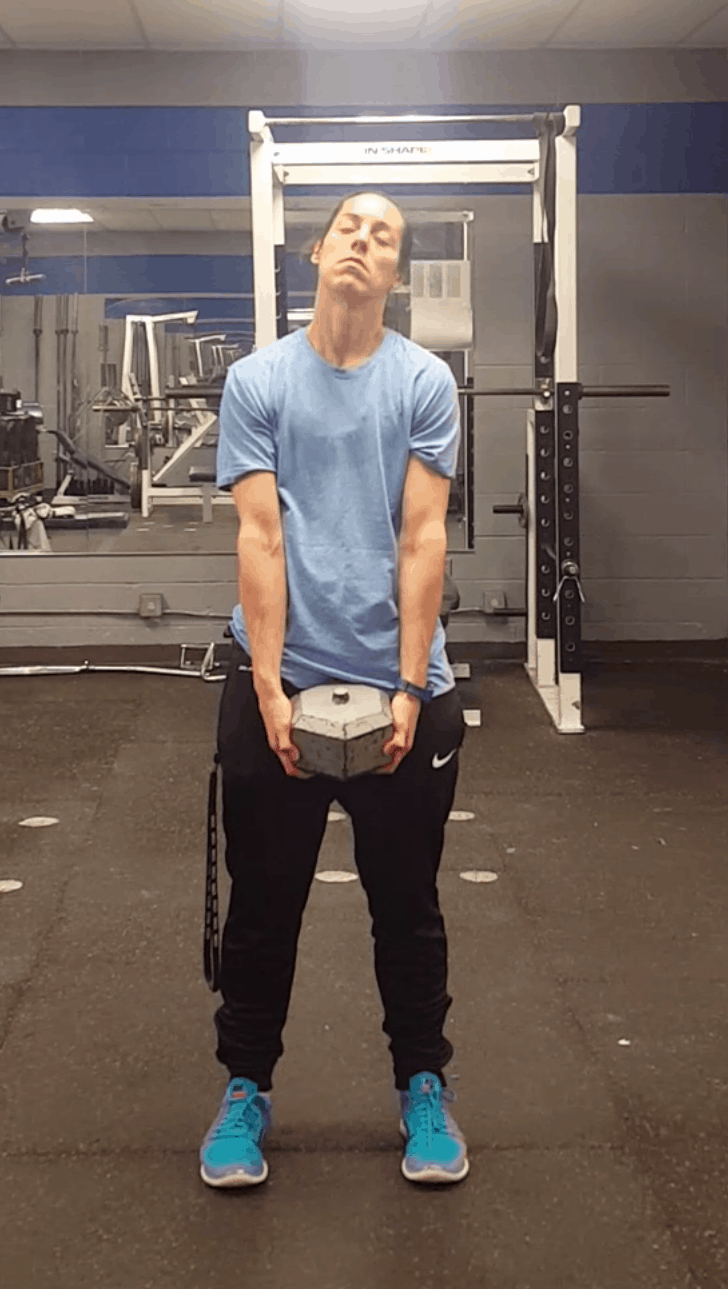
Spinal Fluidity – Influence of Scapula and Load
Movement expression is dependent on on our tadpole-like head and spine to drive and disperse motion. Any sticking points have a reverberatory effect on the actions of the limbs. After a decade of undoing the rigidity trained through athletics and weight lifting, I am beginning to piece together how to create a softness that is often described as fluidity. My hands — how I used them and what I put in them — became my most telling input.
The first connection I made was with load. With some heavy-ish dumbbells in hand ( I believe these were 60 lbs) the tension created by the load helped me feel every segment bending into flexion. It also guided me to where stacked or aligned was at the top standing position. Following the path of greatest ease, a squat became a hinge which became a carry:
I was curious why an object being carried was always held still. Stillness, particularly with load, often tandems with a counteractive stiffness. How and where I held the load uncovered specific lines of tightness, particularly through the neck. Once located, I swiveled and adjusted the skull to determine a place of lessened intensity:
Both hands on the bell established a closed chain relationship. As I walked with it and gyrated it around, my neck remained the most stationary point. I have trained my neck to become a stabilizer. Unsurprisingly, it is the part I strain most.
Exploring neck mobility was my next investigation. How well could my head and neck lead the spine under various loads and tensions? Does tension created from controlled irradiation differ from the external constant of mass and gravity? Are loose, unencumbered hands beneficial to making waves? At what load does fluidity become compromised in order to keep the weight afloat? Many questions, internalized with a comparative experiment:
The constant was that the shoulder blades were the primary purveyors of movement. If they were free, my spine could follow. When fixed to offset held load, the (nearest thoracic) vertebrae hardened in kind.
Examining scapular motion on its own required the removal of any weighted resistance. I tried to use the feedback from the rack to create freedom without it:
Since extending the spine was more difficult than flexing, I sought to find positions in which extension felt more natural. I found one in the hinge. Hands removed, I tested the spinal sensitivity of a more medial load:
The squat-deadlift-stand correlation returns.
Finally, I wanted to see what my spine could do when minimizing scapular influence. I used a tight pull (again in a hinge) to pin the shoulder blades and solidify their placement through maintaining a task. The tri-planar motion available to me in this situation was paltry at best:
The whittling away of variables allows you to ask different questions and perceive issues from different angles. Rabbit holes are an exciting area of intrigue when you can map the course and find your way out. Confidence in navigation comes from a willingness to get lost. Each dive leads to a better understanding, and an application into the next adventure.



